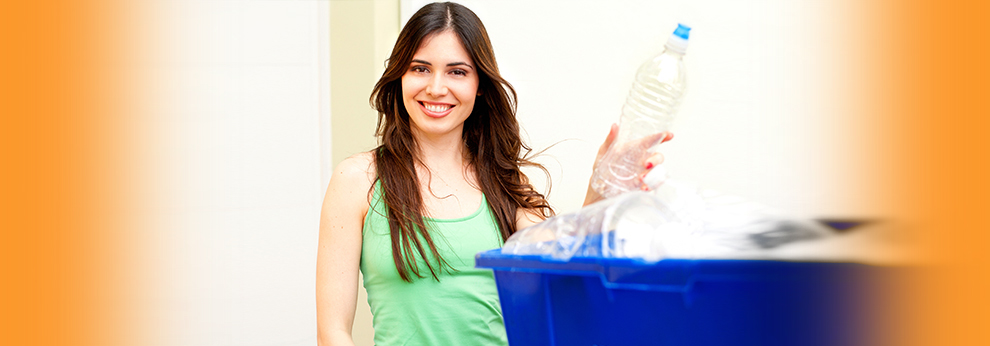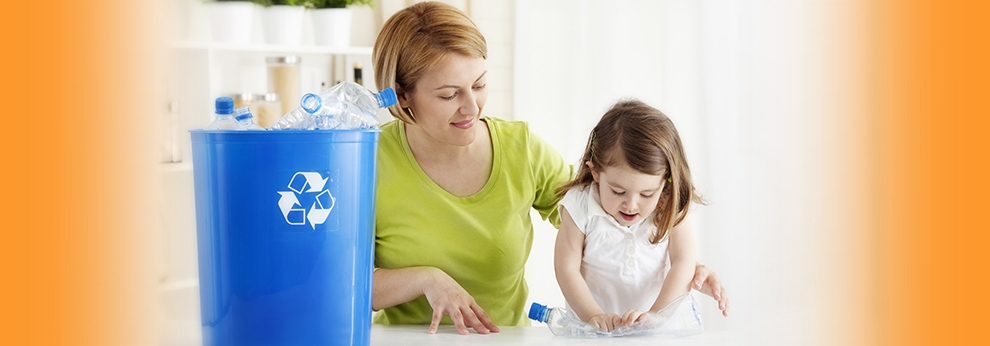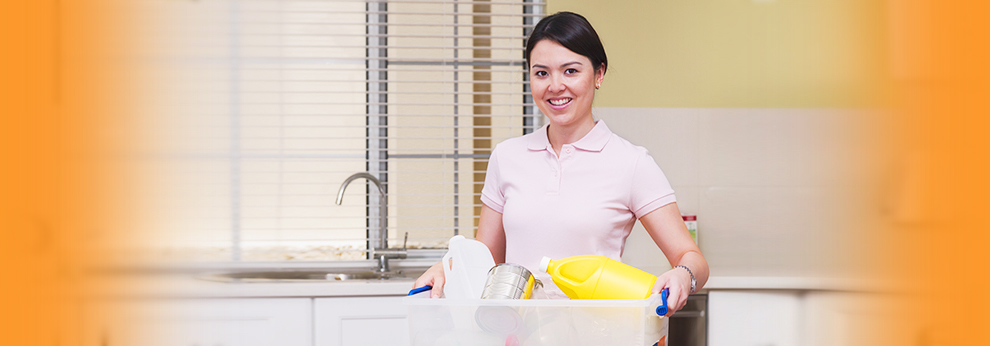Journey to Safe Living: Identifying Plastics to Eschew
Posted on 04/10/2025
Journey to Safe Living: Identifying Plastics to Eschew
The journey to safe living demands conscious decisions at every step, and one vital aspect is the selection of plastics we use daily. Plastics have revolutionized our lives, yet not all plastics are created equal. Some pose serious risks to our health and environment, making it imperative to understand which plastics to avoid. In this comprehensive guide, we unravel the mysteries of plastic types, health hazards, and environmentally friendly alternatives, empowering you on your quest for a healthier, safer, and more sustainable lifestyle.

Understanding Plastics: Types and Identification
Plastics are classified by resin identification codes (RIC) -- those familiar numbers inside the recycling triangle found on many containers. Each number represents a different type of plastic polymer, and each has unique properties, uses, and potential risks. Let's decode what these numbers mean:
Table: Common Plastics and their Codes
- 1 (PET or PETE) - Polyethylene Terephthalate
- 2 (HDPE) - High-Density Polyethylene
- 3 (PVC) - Polyvinyl Chloride
- 4 (LDPE) - Low-Density Polyethylene
- 5 (PP) - Polypropylene
- 6 (PS) - Polystyrene
- 7 (Other) - Various, often Polycarbonate or Bioplastics
Why Is It Important to Identify and Eschew Certain Plastics?
Research indicates that some types of plastics can leach hazardous chemicals into our food, water, and environment. For those aiming for a safer lifestyle, identifying plastics to avoid is crucial. Health risks, environmental damage, and the presence of toxins like bisphenol A (BPA) and phthalates make certain plastics much riskier than others.
Main Reasons to Avoid Unsafe Plastics:
- Health Concerns: Some plastics may leach hormone-disrupting or carcinogenic chemicals.
- Environmental Impact: Many plastics persist in the environment, causing pollution and harming wildlife.
- Food Safety: Plastics not designed for repeated or heated use can contaminate food and drinks.
- Recycling Challenges: Not all plastics are recyclable, and some contaminate recycling streams.
Identifying Plastics to Eschew: The Culprits
Not all plastics are created with equal safety profiles. Let's uncover the types of plastics you should deliberately avoid for a safer, healthier lifestyle:
1. #3 Polyvinyl Chloride (PVC)
PVC is commonly found in plastic pipes, shower curtains, inflatable toys, some food wraps, and bottles. Its production and disposal produce dioxins, which are potent carcinogens and endocrine disruptors. PVC often contains phthalates--chemicals used to soften plastics, but also linked with reproductive and developmental issues.
- Health risks: Contains phthalates and may leach dangerous chemicals.
- Environmental impact: Highly polluting throughout lifecycle.
- Recommendation: Avoid PVC whenever possible--especially for food packaging, toys, or clothing.
2. #6 Polystyrene (PS)
Polystyrene is widely used in disposable coffee cups, takeout containers, egg cartons, and packing peanuts. When heated (e.g., with hot drinks or microwave use), it can leach styrene, a suspected carcinogen and neurotoxin. Moreover, PS is notoriously difficult to recycle and a major source of ocean microplastic pollution.
- Health risks: Potential for styrene leaching, especially with heat.
- Environmental impact: Persists as litter and microplastics, rarely recycled.
- Recommendation: Steer clear of polystyrene for food and drink containers.
3. #7 Other Plastics (Often Polycarbonate)
Category #7 is a catch-all for various plastics, most notoriously polycarbonates, which often contain bisphenol A (BPA). BPA is a known endocrine disruptor, linked with obesity, cancer, infertility, and developmental issues. Though many manufacturers have shifted toward "BPA-free" labeling, some replacements may also pose health concerns.
- Health risks: May leach BPA or similar toxic compounds.
- Environmental impact: Complex mixture--difficult to recycle, persistent in waste.
- Recommendation: Eschew #7 plastics, particularly for baby bottles, water bottles, and food storage.
Other Plastics: Which are Considered Safer?
For those on the journey to safe living, it's not only about avoiding certain plastics but also knowing which are relatively safer:
- #1 PET (Polyethylene Terephthalate): Common in bottled water and soda bottles, generally considered safe for one-time use. Do not reuse frequently as bacteria can grow.
- #2 HDPE (High-Density Polyethylene): Used for milk jugs, some water bottles, toys. Durable, resists leaching, and is widely recycled.
- #4 LDPE (Low-Density Polyethylene): Found in bread bags, grocery bags, and some food wraps. Flexible and low-toxicity.
- #5 PP (Polypropylene): Used for yogurt containers, straws, bottle caps, and microwave-safe containers. Often rated as one of the safer plastics, especially for repeated use.
Note: Even "safer" plastics are best avoided for hot foods, acidic foods, or prolonged reuse, to further minimize any risk of chemical migration.
Plastic Additives and Their Hidden Dangers
Beyond the resin code, many plastics contain additives to enhance performance, color, flexibility, or durability. These can include:
- Plasticizers (like phthalates and bisphenol A): Used to make plastics flexible.
- Colorants: Some may contain heavy metals or other toxins.
- Stabilizers and Flame retardants: Improve longevity and safety but may introduce new chemical risks.
Some additives can migrate from plastics into food, drinks, or even act as airborne contaminants.
Tips for Avoiding Risky Plastics in Daily Life
Your path to safe and sustainable living is about consistent habits. Here's how to identify and sidestep hazardous plastics daily:
- Read recycling codes before buying: Look for the triangle symbol--avoid #3, #6, and #7 when possible.
- Opt for alternatives: Choose glass, stainless steel, or certified food-safe ceramics.
- Avoid microwaving plastics: Heat increases the likelihood of chemical leaching--even with "microwave-safe" plastics.
- Keep plastics away from sunlight: UV rays can weaken plastic polymers and release chemicals.
- Do not use cracked or cloudy plastics: They may leach chemicals more readily.
- Use fresh containers: Replace plastic food containers regularly if you choose to use them.
- Support businesses with sustainable packaging: Encourage change by voting with your wallet.
Children and Plastics: Special Concerns
Kids are more vulnerable to environmental toxins--including those from plastics--because their bodies and brains are still developing. Here's how to protect children on the journey to safe living:
- Never give babies or children food or drink in #3, #6, or #7 plastics.
- Choose toys and pacifiers labeled "BPA-free" or, better, made of silicone or natural rubber.
- Avoid plastic teethers and utensils containing dubious plastics.
- Wash baby items by hand--harsh heat in dishwashers can degrade plastics faster.
Environmental Impact: Why Eschewing Harmful Plastics Matters
Single-use plastics, especially types #3, #6, and #7, are notoriously difficult to recycle and often end up polluting oceans, rivers, and landfills. Microplastics from these sources have invaded our water, soil, and even the food chain. Eschewing hazardous plastics is not only a personal health task--it's a global responsibility.
How Your Choices Make a Difference
- Reduced Plastic Waste: Every piece avoided is one less in a landfill or the ocean.
- Support for Recycling Systems: Using recyclable plastics makes waste management easier and more efficient.
- Pressure on Manufacturers: Consistent consumer demand for safer, eco-friendly packaging forces industry evolution.
Safer Alternatives: Moving Beyond Plastic
On your journey to safe living, integrating sustainable alternatives creates a lasting impact. Here are top alternatives to plastics to embrace:
- Glass: Non-toxic, inert, recyclable, and reusable for decades.
- Stainless steel: Ideal for water bottles, lunch boxes, and food storage.
- Silicone: Safe for baby items, bakeware, and storage, provided it's food-grade.
- Wood and bamboo: Perfect for utensils and cutting boards--naturally antimicrobial.
- Ceramics: Use for bowls, cups, and plates with food-safe glazes.
Simple Steps for a Plastic-Safer Home
Transforming your household routines is achievable with mindful upgrades:
- Swap plastic wrap for beeswax or silicone covers.
- Use reusable grocery bags instead of single-use plastic.
- Purchase in bulk with your own containers to minimize packaging.
- Store leftovers in glass or stainless steel containers.
- Choose personal care products packaged in metal, paper, or glass.

Frequently Asked Questions About Avoiding Harmful Plastics
Q: Are all BPA-free plastics safe?
A: Not necessarily. Many "BPA-free" products substitute BPS or BPF, which may have similar hormone-disrupting effects. When possible, use non-plastic alternatives for food and drink.
Q: Is it okay to reuse plastic water bottles?
A: Most single-use water bottles (#1 PET) are not designed for repeated use; they can develop cracks and harbor bacteria. Opt for glass or stainless steel bottles for longevity and safety.
Q: Do all plastics leach chemicals when heated?
A: Heating can increase leaching risks, especially in lower-quality or older containers. Never microwave or pour hot liquids into plastics marked as #3, #6, or #7.
Q: How can I identify safer plastics easily?
A: Stick to numbers #2, #4, and #5 for food storage, and always check recycling codes. But for ultimate safety, switch to glass, stainless steel, or food-grade silicone when you can.
Conclusion: Embrace the Journey to Safe Living by Ditching Dangerous Plastics
The journey to a safer, healthier, and more environmentally friendly lifestyle starts with small, intentional choices. By learning to identify and eschew the most hazardous plastics--#3 PVC, #6 polystyrene, and #7 polycarbonate--you can significantly reduce your exposure to toxins, protect your family, and contribute to a cleaner planet.
Remember, each switch to safer materials is a step toward a brighter future. Your journey to safe living matters--start today by scrutinizing the plastics in your life and making mindful changes for your health and the Earth's well-being.
```


